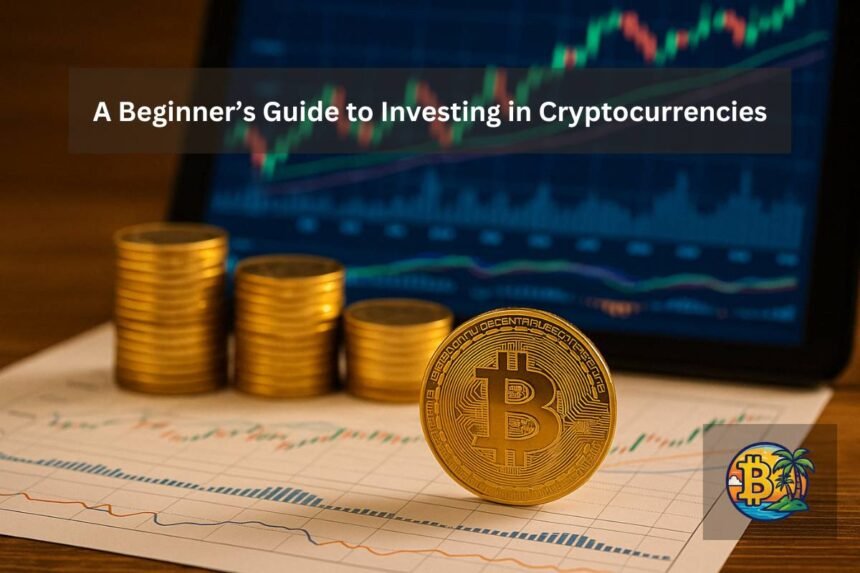Key Insights
- The major difference between crypto and regular money is that crypto is digital, and is not issued or controlled by central authorities like governments and banks.
- Before investing a single dollar of your hard-earned funds, try to understand how crypto and blockchain work.
- You’ll need a crypto exchange to get some crypto, and some of the most beginner friendly options include Coinbase, Binance, Kraken and Gemini.
- Crypto, like most other kinds of investments, comes with its own set of risks. As such, it is important to be aware of them before starting.
- Do your own research and never follow hype blindly. Remember to always understand what you are buying

You might have heard of crypto on the internet at some point, whether it be Bitcoin, Ethereum or even Dogecoin.
You might be wondering what all the fuss is about at this point. Maybe a friend made some quick gains, or you’re simply curious about how digital money works.
Either way, jumping into the crypto space for the first time can feel overwhelming.
But it doesn’t have to be.
Here is a friendly guide on the basics of crypto investing, without all the confusing jargon.
If you’re ready to start investing or just curious, here are some things you need to know.
What Is Crypto, Really?
Think of crypto as money, because it is money. The only difference between crypto and regular money is that crypto is digital, and is not issued or controlled by central authorities like governments and banks.
Instead, it is built on blockchain technology, and runs on a public ledger that records all transactions.
Some of the major things that make crypto different from other forms of money is that It is digital, and doesn’t involve paper bills or metal coins.
It exists online and is decentralized, with all transactions being protected by cryptography.
You should also know that crypto is one of the most volatile forms of money there is, considering how its prices can go up or down very fast.
Some of the most popular kinds of crypto include Bitcoin, Ethereum, Solana, XRP and Dogecoin, even though there are thousands more.
Why Are People Investing in Crypto?
People invest in crypto for different reasons. For many people, crypto is attractive because of its potential for quick gains.
For many others, crypto is a long-term bet on technology or financial freedom.
Many cryptocurrencies have surged in value in the past, providing massive returns for their investors, albeit with high risks.
Crypto also offers a sense of independence, considering how it isn’t controlled by governments or central banks.
Blockchain technology is powering some of the newest tech in the world today, from Dapps to NFTs and more, which explains why it is attractive to many.
In addition, investors also get in on crypto to diversify their portfolios beyond traditional assets like stocks and bonds.
Finally, most cryptocurrencies like Bitcoin have fixed supplies, and are therefore immune to inflation.
This makes them perfect for investors who wish to hedge against unfavorable economic situations.
How to Start Investing in Cryptocurrency?
If you’re ready to take your first step, this is a simple guide you can follow:
Step 1: Learn the Basics
Before investing a single dollar of your hard-earned funds, try to understand how crypto and blockchain work.
You don’t need to be a tech expert to start investing. However, knowing the basics before getting into the market will help you to make smarter decisions.
Consider sticking to well-known websites and avoid anything that sounds too good to be true.
Step 2: Pick a Crypto Exchange
You’ll need a crypto exchange to get some crypto. Exchanges are online platforms where people buy and sell digital assets, and some of the most beginner friendly options include Coinbase, Binance, Kraken and Gemini.
Be sure to consider aspects like security, fees, supported coins and user experience before picking an exchange.
Step 3: Create and Verify Your Account
Once you have chosen an exchange, you’ll need so sign up and go through a process called KYC (Know Your Customer).
For this, you might need to upload a photo ID or possibly some proof of address to get started.
The entire process might take a few minutes or a couple of days depending on the platform. However, once done, you should be good to go.
Step 4: Add Funds
To start investing, you’ll need to deposit money into your account. Most platforms accept funding from bank transfers, debit cards and credit cards, occasionally.
Keep in mind that different methods have different fee structures. You might also experience different processing times for each.
Step 5: Make Your First Crypto Purchase
This is where the magic happens. You can start as small as you want, and eve buy fractions of a coin.
For example, Bitcoin trades at around the $80,000 mark. However, you do not need to buy a whole Bitcoin to get into the market.
You can buy as little as a $10 piece of Bitcoin to begin trading.
Step 6: Choose How to Store Your Crypto
Once you have some crypto in your possession, you’ll need to store it safely.
You can either use an exchange wallet, which is typically built into the crypto exchange of your choosing.
Exchange wallets are great for beginners, but are less secure for the long term/.
If the exchange wallet isn’t your style, you can choose a software wallet like Trust Wallet and Exodus for more control, or a hardware wallet like Ledger and Trezor to store your crypto offline.
Keep in mind that if you’re just starting and investing only a small amount, using the exchange’s wallet is fine.
However, for larger amounts, consider moving to a software or hardware wallet for your purchases.
What Are the Risks of Investing in Crypto?
Crypto, like most other kinds of investments, comes with its own set of risks. As such, it is important to be aware of them before starting.
To start with, it is important to understand that crypto is very volatile. This means that prices can change very quickly and gains can turn into losses in the blink of an eye.
Crypto is not as regulated as traditional financial markets either, which means that governing laws are still growing and anything can happen.
Exchanges or wallets can also be hacked. If you lose your private keys, your funds are as good as gone.
This is without mentioning the scams and hacks. The crypto space is full of fake projects and phishing schemes.
As rewarding as crypto can be, remember to always do your own research before putting in a dime.
Tips for First-Time Crypto Investors
If you’re just getting started, it is important to start small, and only invest what you can afford to lose.
Do your own research, and never follow hype blindly. Remember to understand what you are buying, and spread your investments across a few coins to reduce your risk exposure.
Think for the long term and understand that patience is important. While you’re at it, choose strong passwords and remember to enable two-factor authentication for all services.
Finally, remember to stay updated and consume as much information as possible about projects you find interesting and about the crypto space as a whole.
Overall, getting into crypto might be complex from the start.
But investing in crypto is a lot like picking up any other new skill. It becomes easier as you go, the more time and effort you put in.
The important thing is to start slow and never risk more than you can afford to lose.








